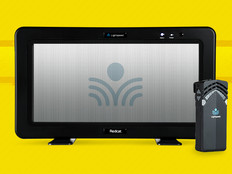e-Reading in Schools: How the Amazon Whispercast Could Change the Classroom
The Amazon Kindle has been a boon to education, engaging students who otherwise don't like to read and helping to reduce the number of books students need to carry every day. But management on an enterprise level was cumbersome until the release of the Amazon Whispercast for schools and businesses in October 2012.
The free service's central feature is a web-based interface that allows authorized staff — technology coordinators, media and curriculum specialists, and teachers, for example — to buy books using purchase orders or other forms of payment and then wirelessly deploy those books on any number of devices. Devices can be grouped, making it easy to send books by class section or grade level in just minutes.
The Pull of the Amazon Whispercast Push
Andy Shaw, Kindle program coordinator for Florida's Clearwater High School, manages 3,400 Kindle accounts for student, faculty and staff devices using Amazon Whispercast. He says the new service has transformed the way he operates the Kindle program.
Before Whispercast, "if we wanted to buy a book, we had to complete the transaction on each device or send Amazon a spreadsheet" of devices that should receive the book, Shaw explains. Now, he can perform the same task in just a few minutes using the Whispercast interface.
60% of students carry backpacks that weigh more than 10 percent of their total body weight.
Other customers like the service's ability to push policies — such as usage restrictions and password information — all at once. Gigi Whiteside, assistive technology specialist for Fulton County (Ga.) Schools, uses the Kindle with her special-needs students, many of whom have attention deficit disorder and need help focusing. Being able to turn off social media or web access on the devices ensures that students don't get derailed when their attention wanders, she says.
Shaw also loves the Amazon Whispercast's ability to manage content on personal devices that have the Kindle app. The feature makes it possible for students and teachers to start a reading project on a school-owned device, then finish it later on their personal tablet or smartphone — without losing their place or any notes they saved in the text.
What's more, the Amazon Whispercast allows for the transfer of non-Kindle files (such as Microsoft Word documents and PDFs) to Kindle devices and apps, making it easy for teachers to share syllabi and other documents that might get lost in students' backpacks.
Non-educators also see great value in schools having access to Kindle devices and the Whispercast service. One benefit is that students always have a book's most current edition, says Rob Enderle, principal analyst for the Enderle Group.
The only drawback, he adds, is the relative dearth of textbooks currently available in the Kindle format. If textbook manufacturers don't start offering their wares in formats that schools use, he says, "somebody else will, and they'll lose their market."






